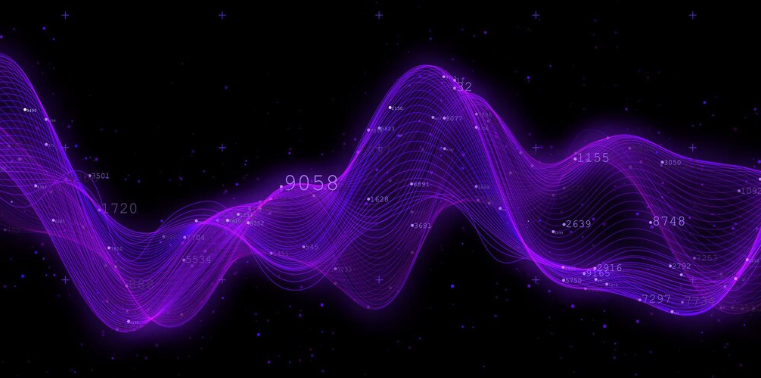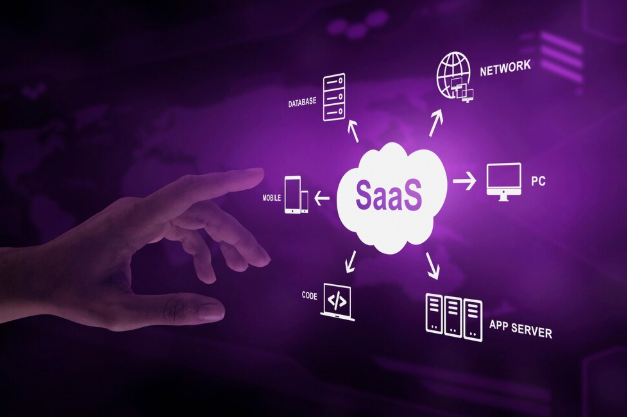Flow in coding is a mental state where a programmer becomes fully absorbed in their work, experiencing heightened focus and engagement. This state helps them solve problems more efficiently while maintaining a steady rhythm of learning and adaptation. Flow is characterized by a balance between challenge and skill that leads to complete immersion and sustained productivity.
Achieving this state allows developers to lose track of time as they respond naturally to the demands of their code without repetitive effort. It supports creativity and deep learning, making complex tasks feel more manageable and even enjoyable.
Understanding the psychology behind flow can provide valuable insights into how programmers can design their work environment and approach to foster these moments of peak performance consistently.
What Is Flow in Coding?

Flow in coding is a mental state where a programmer is fully immersed and focused on their work. This state enhances concentration and efficiency, enabling developers to perform complex tasks with ease. The concept has psychological roots and distinct traits that set it apart from ordinary focus.
Definition of Flow State
Flow state is defined as complete absorption in an activity, where distractions fade and a person experiences heightened focus and enjoyment. In coding, this means a developer is deeply engaged, often losing track of time and external surroundings. This intense involvement typically leads to greater productivity and creativity.
This state is not just daydreaming or superficial concentration; it is a balance between challenge and skill. When challenges match a coder’s ability, flow emerges naturally. If the task is too easy or too hard, flow is less likely to occur.
Origins of the Flow Concept
The flow concept was introduced by Mihaly Csikszentmihalyi, a psychologist who studied optimal human experiences. He identified flow as a key element of peak performance and satisfaction in various activities, including coding. Csikszentmihalyi’s research began in the 1970s and culminated in his 1990 book, Flow, which remains influential in psychology and productivity studies.
His work showed that flow arises when clear goals are set, immediate feedback is received, and deep focus is maintained. These conditions help programmers stay motivated and enjoy their work more, supporting both learning and mastery.
Key Characteristics of Flow
Several key characteristics define flow in coding:
- Intense focus: The coder is fully concentrated on the task without interruptions.
- Loss of self-consciousness: Awareness of time and self-awareness diminish.
- Clear goals: Objectives and next steps are well understood.
- Immediate feedback: The coder quickly sees the effects of their work.
- Balance of challenge and skill: Tasks match the programmer’s abilities.
These traits foster a sense of control and intrinsic motivation, making coding sessions more effective and satisfying. Achieving flow regularly can improve both the quality of code and the coder’s overall experience.
Psychological Foundations of Flow
Flow emerges from a precise balance between skill level and task challenge, fostering deep concentration. It is closely tied to intrinsic motivation, where the coder’s internal drive sustains engagement and persistence through complex work.
Optimal Challenge and Skill Balance
Flow requires a match between the difficulty of the coding task and the programmer’s abilities. If the challenge is too low, boredom occurs; if too high, anxiety develops. This challenge-skills balance ensures the task is engaging but manageable, pushing the coder’s limits without overwhelming them.
Tasks that progressively increase in complexity help maintain this balance. When skills grow, new challenges must match this growth to keep flow intact. Clear goals within the task provide direction, enabling the coder to focus on problem-solving without unnecessary distractions.
Hyperfocus and Attention
Flow is characterized by hyperfocus, where attention narrows intensely on the coding activity. External distractions fade, allowing a coder to fully immerse in the task. This focused state improves the quality of work and efficiency.
Sustaining attention requires minimizing interruptions and creating an environment supportive of concentration. Immediate feedback from the code or tools strengthens this focus by allowing quick adjustments and reinforcing progress, which helps maintain momentum.
Intrinsic Motivation in Development
Intrinsic motivation drives programmers to engage deeply with coding tasks, independent of external rewards. This internal desire to solve problems and create pushes sustained effort and resilience.
Developers motivated intrinsically find enjoyment in mastering challenges, which promotes longer periods of flow. They often set personal standards and goals that enhance commitment, fostering a rewarding coding experience rooted in personal growth and curiosity.
Triggers and Barriers to Flow in Programming
Flow in programming arises and falls due to specific conditions. The right challenge level, minimal distractions, and a supportive environment play critical roles. Interruptions, task difficulty, and technology issues often disrupt this state.
Common Flow Triggers for Developers
Developers often enter flow when deeply focused on a challenging but manageable code task. Clear goals and immediate feedback from the system help maintain engagement. Tasks that match a developer’s skill without overwhelming them prevent anxiety or boredom.
Autonomy in choosing methods or tools can boost flow by increasing motivation. A quiet, organized workspace supports sustained concentration. Developers also benefit from chunking complex problems into smaller, solvable units, which provides a steady sense of progress.
Interruptions and Their Effects
Interruptions break a coder’s concentration, causing costly context switching. Even short distractions can require several minutes to regain full focus. Frequent interruptions can lead to frustration, reduce productivity, and prevent entry into deep work.
Common sources include notifications, colleague queries, and task shifts due to shifting priorities. Interruptions increase cognitive load and disrupt problem-solving momentum. Minimizing these disruptions is essential for developers to sustain longer flow periods.
Technological and Environmental Factors
Technology plays a dual role: it can either enhance or block flow. Problems like software bugs, unstable tools, or using unfamiliar frameworks increase cognitive strain and delay progress. Low code quality or technical debt also frustrates developers, creating barriers.
Environmental aspects like noise, poor lighting, or lack of ergonomic setup reduce comfort and focus. Conversely, a controlled, distraction-free workspace with reliable technology supports deeper immersion. Optimizing both technology and environment is critical for maintaining flow in programming.
Benefits of Experiencing Flow While Coding
Flow state brings heightened focus and immersion that directly impact work quality. It improves output efficiency, fosters innovative thinking, and accelerates learning, which benefits any software developer aiming for consistent progress.
Enhanced Productivity
When in flow, a coder’s attention narrows to the task, reducing distractions effectively. This intense focus can lead to faster code development and fewer errors. Time often feels distorted, allowing longer stretches of uninterrupted work, which boosts overall output.
The sustained concentration helps avoid the common pitfalls of fragmented workflows, such as constant context switching. As a result, developers complete complex tasks more quickly, increasing their daily productivity without sacrificing accuracy.
Creative Problem Solving
Flow fosters an environment where creative ideas surface more naturally. Developers in this state can make novel connections between concepts, resulting in innovative solutions to programming challenges.
The deep engagement diminishes mental barriers like self-doubt or distraction, enabling clearer thought processes. This heightened clarity supports brainstorming and experimentation, which can yield more efficient or elegant code designs.
Skill Development
The focus and engagement in flow sessions create ideal conditions for implicit learning. By working deeply on challenging problems, developers refine both technical skills and cognitive strategies.
Repeated flow experiences strengthen neural pathways associated with coding tasks, speeding skill acquisition over time. This ongoing learning process is more effective because the developer is fully absorbed, increasing retention and mastery.
Strategies for Achieving Flow in Coding
Achieving flow in coding requires a deliberate approach to structure, environment, and mindset. Focused attention on well-defined objectives, minimizing interruptions, and leveraging the right tools all help maintain sustained concentration and efficiency.
Setting Clear Goals
Clear, specific goals guide the coder’s focus and prevent scattered attention. Goals should balance challenge and skill level to avoid boredom or frustration, aligning with the concept that tasks must neither be too easy nor too difficult.
Breaking larger problems into smaller, manageable tasks creates measurable milestones. This approach offers consistent motivation and a sense of progress. Time-boxing tasks or setting short-term objectives helps maintain momentum without overwhelming the coder.
Using goal-setting frameworks such as SMART (Specific, Measurable, Achievable, Relevant, Time-bound) provides clarity. It enables a structured workflow that supports steady advancement and enhances engagement in the coding process.
Managing Distractions
Minimizing distractions is critical to maintaining flow. Environmental factors such as noise, frequent notifications, or multitasking fragment attention and hinder deep focus.
Coders benefit from creating a dedicated workspace free from interruptions. Techniques like using “Do Not Disturb” modes, scheduling focused work sessions with breaks, and disabling non-essential notifications are effective strategies.
Time management tools can help allocate unbroken blocks for coding, reinforcing sustained concentration. By controlling their environment and digital inputs, coders reduce cognitive load and improve task absorption.
Using Tools and Platforms for Support
Development tools play a key role in supporting flow by streamlining the workflow and reducing friction. Integrated Development Environments (IDEs) like PyCharm or Visual Studio automate tasks, highlight errors, and organize code efficiently.
Version control systems and task management platforms assist in tracking progress and maintaining goal clarity. These tools help coders avoid losing context and provide a smoother experience when handling complex projects.
Automation scripts, code snippets, and debugging utilities reduce repetitive tasks, allowing coders to focus on problem-solving. Using well-chosen platforms tailored to their workflow optimizes productivity and sustains flow over longer sessions.
Teamwork, Collaboration, and Flow
Flow in coding is not limited to individual effort; it frequently emerges through seamless collaboration among developers. Effective teamwork, paired programming, and timely feedback play critical roles in maintaining focus and sustained engagement within coding teams.
Flow in Team Environments
Team flow occurs when developer teams synchronize their focus and energy on shared coding objectives. Unlike individual flow, it requires high task engagement combined with clear communication and mutual trust.
Key factors enabling team flow include:
- Task enjoyment and challenge: Teams perform best when the work is both engaging and appropriately challenging.
- Time dissociation: Members lose track of time due to deep immersion.
- Control and autonomy: Feeling ownership over tasks enhances flow.
Teams that achieve this state often experience heightened creativity and problem-solving capabilities as collaboration supports individual focus and collective momentum.
Pair Programming Dynamics
Pair programming is a practical coding methodology that naturally fosters flow by placing two developers in close collaboration. One writes the code (driver), while the other reviews and guides (navigator).
This dynamic supports flow by:
- Reducing distractions through constant interaction.
- Balancing cognitive loads between partners.
- Accelerating error detection and solution development.
Consistent role switching helps sustain engagement and avoid fatigue. The immediate exchange of ideas sustains momentum and keeps both partners focused on a shared coding goal.
Role of Feedback and Support
Feedback is essential to both individual and team flow during coding. Constructive and timely feedback reinforces progress, clarifies goals, and prevents frustrations.
Support mechanisms that enhance flow include:
- Regular check-ins to align goals.
- Positive reinforcement to boost confidence.
- Collaborative problem-solving to reduce blockers.
Developers who feel supported and able to adjust their work based on feedback tend to remain in flow longer. Open communication channels reduce misunderstandings, which can disrupt focus and momentum.
Impact of No-Code and AI Platforms on Flow
No-code and AI platforms reshape how developers and creators experience flow by streamlining tasks and minimizing interruptions. These technologies adjust the cognitive load involved in coding, fostering deeper focus and smoother progress. Their specific features and integrations enhance workflow continuity and inclusivity in software design.
No-Code Tools and Focus Enhancement
No-code platforms provide visual interfaces and drag-and-drop functionality that simplify application building. This immediate feedback loop reduces the cognitive friction caused by debugging and syntax errors common in traditional coding.
Users can stay immersed longer as these tools shift attention from technical details to creative problem solving. For example, Imagine.bo’s interface allows users to rapidly iterate on ideas without switching mental gears, supporting sustained concentration.
By minimizing repetitive and technical overhead, no-code tools help maintain a steady rhythm of work, a key factor in achieving flow. This uninterrupted progression encourages deeper engagement and a clearer focus on end goals.
AI-Assisted Workflows in Software Creation
AI integration in low-code and no-code platforms automates routine decisions and suggests optimized solutions. AI-generated blueprints and recommendations guide users through development stages efficiently.
This assistance reduces mental fatigue and decision paralysis by providing structured pathways and context-aware guidance. Workflow automation tools like those integrated into platforms such as Imagine.bo enhance continuity, enabling developers to keep pace.
The combination of AI’s predictive support with user input results in more fluid development cycles. Users can enter a state of flow by relying on AI to handle mundane tasks while focusing on higher-level problem solving.
Reducing Technical Barriers
No-code and AI platforms democratize software creation by lowering technical entry points. Users without programming expertise can build functional applications, increasing participation across diverse backgrounds.
This expanded accessibility means more individuals can engage deeply without being derailed by complex coding syntax or environments. Platforms that cater to both novices and experts, offering pre-built modules and customization, create a scalable learning curve.
Reducing technical barriers also reduces frustration and potential blockers that disrupt flow. When users can swiftly translate ideas into workable solutions, it sustains motivation and continuous progress throughout the project lifecycle.
Imagine.bo: Supporting the Flow State for Makers
Imagine.bo streamlines the coding experience by minimizing distractions and repetitive tasks, allowing developers to maintain focus. It integrates essential tools and infrastructure, enabling smooth workflows and reliable performance.
Automating Development Tasks
Imagine.bo uses zero-code capabilities to automate routine development steps, like deployment and environment setup. This reduces the time spent on manual configuration, freeing makers to focus exclusively on coding and creativity.
It connects directly with platforms such as AWS, GCP, and Vercel to automate build and deployment workflows, ensuring rapid, repeatable releases. Automated testing and analytics are built in, helping developers identify issues early without interrupting flow.
By removing mundane tasks, Imagine.bo helps makers sustain deep concentration, increasing productivity while maintaining quality throughout the development cycle.
Expert Support and Knowledge Access
Imagine.bo offers integrated expert support to assist developers in real time. This immediate access to guidance helps resolve blockers quickly, preventing flow disruptions during complex problem solving.
The platform includes a repository of best practices and solutions curated by experienced professionals. This resource is searchable within the environment, allowing makers to find critical information without switching contexts.
By combining on-demand expert advice with in-tool knowledge, Imagine.bo reduces cognitive overhead. Developers spend less time troubleshooting and more time immersed in meaningful coding tasks.
Scalability and Security by Default
Imagine.bo provides scalable infrastructure that adjusts automatically based on project demands, removing worries about capacity planning. Whether using AWS or GCP, resources are allocated dynamically to support growth without manual intervention.
Security features are baked into the platform, including role-based access controls and compliance monitoring. This protects code and data through encrypted communication and robust identity management.
Built-in analytics monitor performance and potential security risks continuously. This ensures the development environment remains safe and reliable, supporting uninterrupted focus on coding rather than infrastructure concerns.
Building Sustainable Coding Flow Habits
Sustaining flow during coding involves consistent habits and careful attention to patterns in work sessions. Establishing a reliable structure and reviewing flow experiences helps maintain focus and productivity over time.
Creating a Flow-Conducive Routine
A routine that supports flow combines focused work periods with regular breaks to prevent fatigue. Programmers often benefit from time-blocking sessions of 60 to 90 minutes of coding, followed by short breaks of 5 to 10 minutes. This approach helps maintain energy and concentration.
Daily habits like coding every day, even in small doses, reinforce skill development and reduce entry friction into flow states. Modifying the environment, such as minimizing distractions and setting clear, manageable goals, further primes the mind for flow.
Incorporating end-of-day cleanup tasks or less demanding activities prevents burnout while keeping momentum. This routine ensures that intense focus periods remain sustainable and reduces mental fatigue.
Tracking and Analyzing Flow Experiences
Systematic self-assessment is critical for understanding individual flow patterns. Coders can use journals or analytics dashboards to record when flow occurs, its duration, and influencing factors like time of day or task type.
Tracking key metrics such as focus length, interruptions, and energy levels helps identify conditions that foster or hinder flow. Over time, this data informs adjustments to habits and routines, leading to more consistent flow attainment.
Regular reflection on these analytics allows for targeted changes, such as tweaking session lengths or adjusting work environments. This disciplined feedback loop helps programmers refine their practices to better sustain flow states.
Conclusion
Flow in coding represents a state of focused immersion where distractions fade, and productivity increases. It combines deep concentration with a sense of enjoyment, allowing programmers to engage fully with their work.
This state enhances creativity and problem-solving, making complex tasks feel more manageable. While flow is neither inherently good nor bad, it offers the potential for meaningful and efficient work.
Developers can cultivate flow by balancing challenge with skill, minimizing interruptions, and fostering intrinsic motivation. Understanding flow can improve not only work output but also the overall experience of programming.
| Key Aspects of Flow in Coding | Description |
|---|---|
| Focused Attention | Complete involvement in coding tasks |
| Heightened Performance | Better quality and faster execution |
| Intrinsic Motivation | Engagement fueled by interest, not external rewards |
| Time Distortion | Losing track of time during deep concentration |
Recognizing flow as a natural part of programming informs strategies to create better work environments. It supports developers in achieving both satisfaction and effectiveness in their craft.





